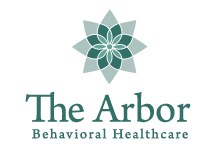Post-traumatic stress disorder (PTSD) is defined as a psychiatric disorder that results after someone has experienced a traumatic event. This manifests itself through disturbing or destructive thoughts related to the traumatic event. In many cases, PTSD is coupled with a substance use disorder because the person has turned to drugs or alcohol to try and numb the effects of the trauma.
At The Arbor, co-occurring disorders, like PTSD and substance abuse, can be treated simultaneously as part of a dual diagnosis treatment program. It has been proven more effective to treat these conditions alongside each other versus separately.
To better understand the signs of PTSD and what PTSD treatment looks like, contact the treatment team at The Arbor at 844.413.2690.
Signs of PTSD
The signs of PTSD can vary as they relate to the specific event that caused the trauma. In general, unusual and anti-social behaviors that seem uncharacteristic for that person will surface. If something looks out of the ordinary, it probably is.
Some signs of PTSD can include:
- Extreme physical or emotional reactions to trauma triggers
- Reclusiveness or avoidance of social interactions that are reminders of the trauma
- Trauma dreams, nightmares, or flashbacks where the trauma is regularly relived
- Avoidance or denial of the existence of the trauma altogether
Additional signs can be similar to those of other mental health disorders, like depression or anxiety, and include thoughts of self-harm or hopelessness. Destructive or dangerous behavior can also arise where there may be a risk of others in their presence being harmed because of their behavior. The person who has PTSD may not even realize the extent of their behavior and how it can affect others around them.
After experiencing a trauma, a person with PTSD is easily triggered, as their guard is up against experiencing any further trauma. This can cause them to be frightened easily and lash out unintentionally. Paranoia can also be quite common, leading to trouble concentrating on anything else. Further, the person experiences abnormal changes in physical and emotional reactions.
PTSD Treatment
Just like the symptoms of PTSD can be unique to each person, so can their course of treatment. What will be consistent is that a customized treatment plan will be developed for each person, catering to their needs. The goals of treatment will be the same. Learning effective ways to cope with the triggers, negative thoughts, and erratic behavior associated with the trauma is critical. If a co-occurring substance use disorder exists, then it will be treated alongside PTSD as part of a dual diagnosis treatment program. The combination of therapeutic modalities used will support the goal of preventing a relapse into past behaviors that only fostered the condition.
Many childhood traumas are not addressed until adulthood, as it is hard for children to process trauma and recognize that they need help to overcome it. This can define their emotional and physical well-being for years to come. Going without professional help can cause people—especially young people—to self-medicate to dull the effects of the trauma that they are dealing with. Trauma therapy to address PTSD can work to help clients heal from past traumas as well as address any co-occurring substance use disorders.
Get PTSD Treatment to Jumpstart Recovery at The Arbor
Recognizing the signs of PTSD is key to getting the treatment help needed. A trauma therapy program, like the one at The Arbor, can help with:
- Facing the trauma head-on
- Daily functioning, regardless of the impact of the trauma
- Being more aware of triggers to the trauma
- Redirecting thoughts toward the positive versus negative
- Taking control over emotions versus emotions controlling you
Reach out today for help with recognizing the signs of PTSD and discuss treatment options with a caring, compassionate, and knowledgeable team member. Call 844.413.2690 or reach out online today.


